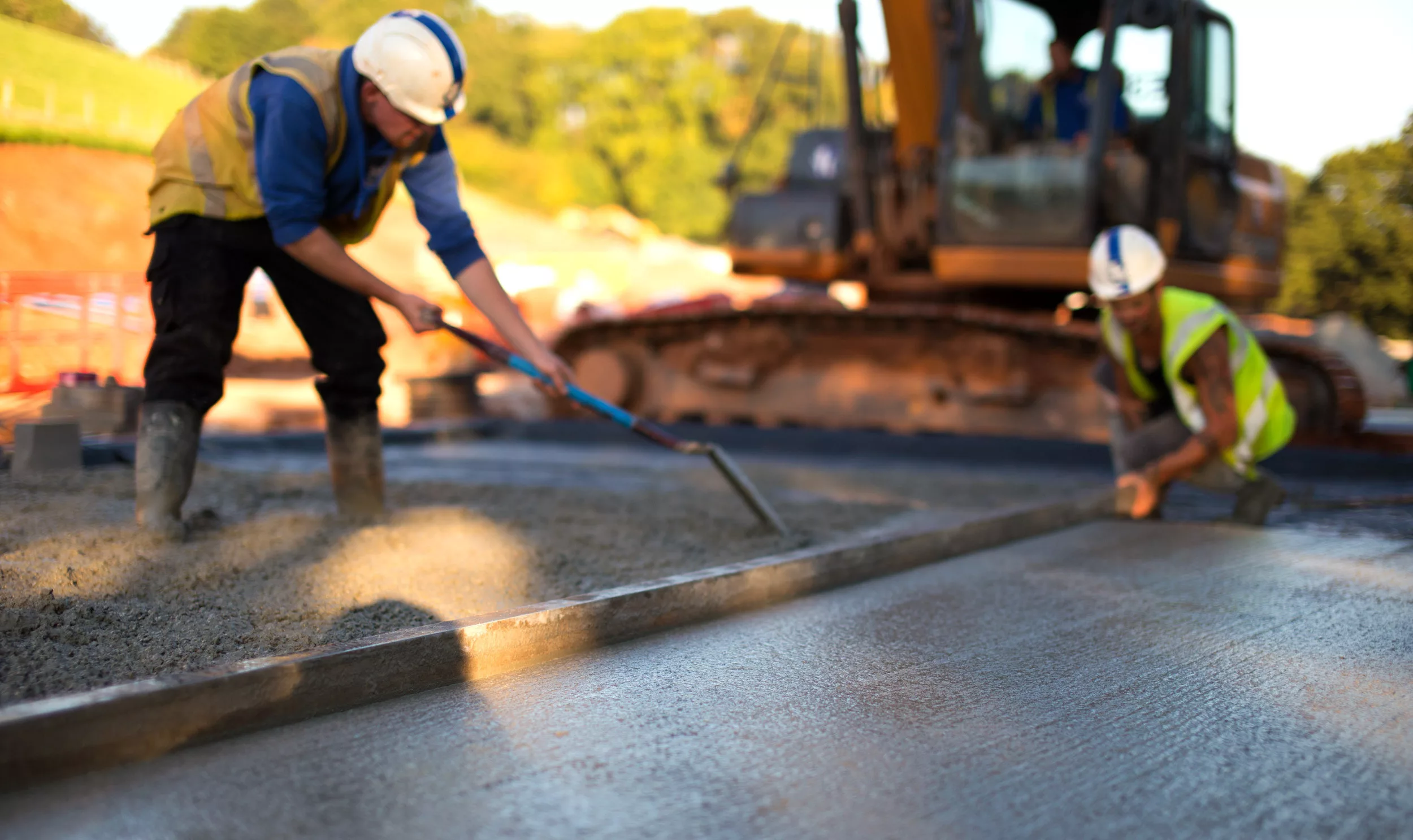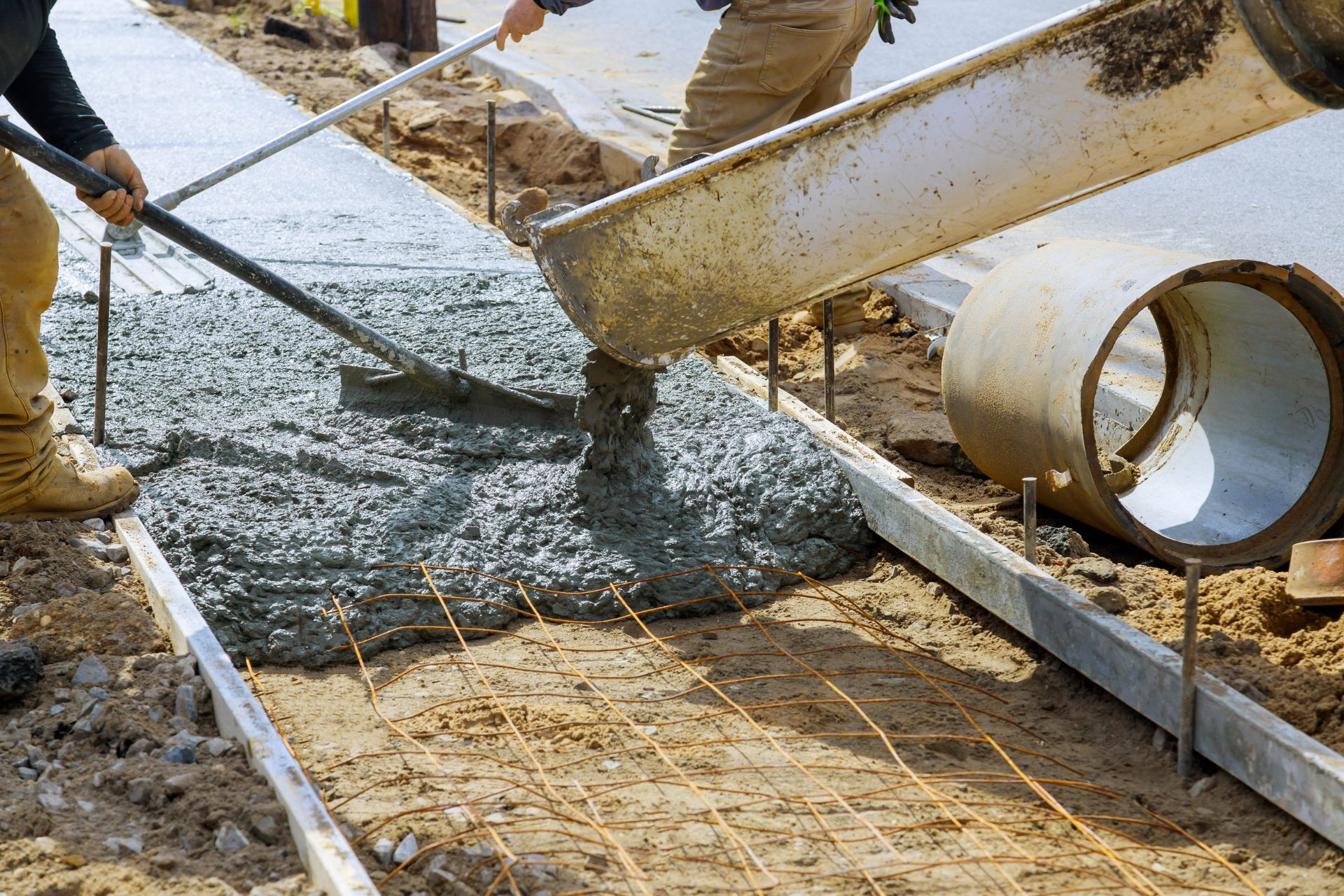
Ready mix concrete is a game-changer in the construction industry, providing a custom-mixed solution straight to job sites. This article dives into its definition, the different types available, the precise mixing process, and its efficient delivery system.
We also explore the link between a ready-mix concrete delivery company and concrete contractors so you’ll have a better understanding of how a concrete pouring project is done.
This article has been checked by a Houston-based ready-mix concrete company to make sure the details are correct and up to date with the concrete industry standard.
What Is Ready Mix Concrete?
Ready mix concrete stands as a pivotal material in the construction industry, and it is known for its efficiency and quality. It is a precisely mixed blend of cement, water, and aggregates like sand, gravel, or crushed stone, prepared in industrial facilities known as batch plants. This tailor-made mixture is then transported to construction sites in mixer trucks, ensuring it remains fresh and is ready to use upon arrival. The adoption of ready-mix concrete revolutionizes project timelines by streamlining the construction process, minimizing waste, and guaranteeing a higher standard of consistency and strength in the finished structure.
What Are the Types of Ready Mix?

Ready-mix concrete isn’t a one-size-fits-all solution. It can be categorized into three primary types, each serving different needs within the construction sector:
- Transit Mixed Concrete: Also known as “dry batched,” this type involves mixing all dry ingredients in a plant, then transporting them to the job site in a mixer truck, where water is added during transit to make sure concrete doesn’t dry itself.
- Shrink Mixed Concrete: This variation is partially mixed at the plant and then further mixed in the truck mixer en route to the site. It allows for adjustments in the final water and mix ratio.
- Central Mixed Concrete: Often referred to as “wet mix,” this type is fully mixed in the plant before being loaded into the truck mixer. It provides the most consistent mixture but requires the fastest delivery and placement to maintain its quality.
How to Mix Concrete?
Mixing ready-mix concrete involves several critical steps to ensure its quality and performance. At the batch plant, experts carefully weigh and mix the cement, aggregates, and water based on the specific requirements of the project. The process is highly automated to ensure precision and consistency. The key factors influencing the mixture are the project specifications, environmental conditions, and the intended use of the concrete, ranging from residential foundations to large commercial infrastructures.
How Does a Ready Mix Delivery Company Work with Concrete Contractors?
Ready mix delivery companies and concrete contractors collaborate closely to ensure construction projects run smoothly. Contractors specify their concrete needs, considering factors like strength and workability. The delivery company then prepares this specific mix at their plant and schedules deliveries to align with the project’s timeline, ensuring the concrete arrives when needed. This process demands excellent communication and flexibility from both parties to address any unexpected changes or delays.
Upon the concrete’s arrival, the delivery company and contractors coordinate to unload and place it efficiently, sometimes using pumping services for precise placement. This partnership is built on trust and reliability, with both sides working together to maintain project schedules and uphold quality standards.
How Ready Mix is Delivered?
The delivery of ready-mix concrete is a critical phase, emphasizing timeliness and efficiency. Once the concrete is mixed, it’s loaded into a rotating drum on a mixer truck, keeping the concrete workable and preventing it from hardening during transport. Upon arrival at the site, the concrete is directly poured into the prepared forms. Coordination between the construction site and the batch plant is vital to schedule deliveries according to the project’s pace, ensuring that the concrete is used immediately upon delivery to maintain its integrity and performance.
Conclusion
Ready-mix concrete is a cornerstone of modern construction, offering unparalleled consistency, efficiency, and quality. It caters to a vast range of project needs through its various types, each designed to meet specific structural requirements. Understanding the mixing and delivery process is crucial for construction professionals to leverage the full benefits of ready-mix concrete, optimizing their projects for speed, strength, and sustainability. As the industry evolves, ready-mix concrete remains at the forefront, driving innovation and excellence in construction practices worldwide.






